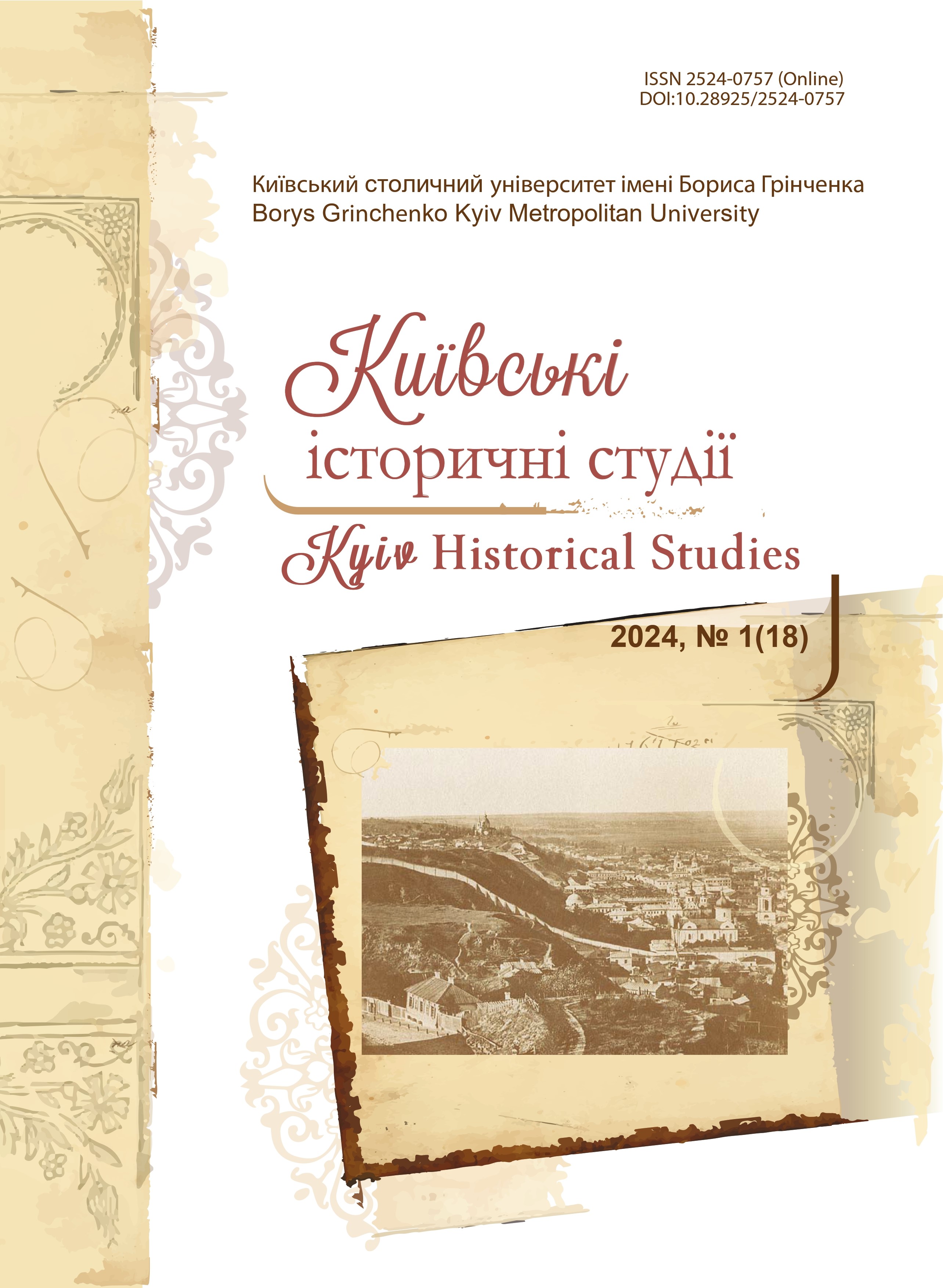The City that does not Sleep: Paris in the Travelogues of Voyagers from Dnieper Ukraine (19th — early 20th Centuries)
DOI:
https://doi.org/10.28925/2524-0757.2024.114Keywords:
travel notes, Paris, travellers, urban space, architectural landmarks, tourismAbstract
The article investigates the records of travellers from Dnieper Ukraine about their visits to Paris in the 19th — early 20th centuries with the aim of reconstructing the image of the French capital. The study is based on travel notes compiled at various times by military personnel, scholars, and individuals involved in the arts. The travelogues are characterized by the subjectivity of descriptions, absence of clear structure, and irregular presentation of data. The author deliberately investigated travel notes created over different decades by individuals from diverse social strata, including M. Bashkirtseva, K. Halahan (senior), O. Krasnokutsky, H. Lukomsky, M. Luchytska, M. Rigelman, K. Skalkovsky, and others. The result of the research is an attempt to form a comprehensive and relatively objective image of the city, emphasizing the changes that occurred over the century. In the course of the investigation, it was established that the attention of travellers from Dnieper Ukraine, who visited Paris, was focused on several aspects related to urban space, including landscape descriptions, the atmosphere of Paris, architectural landmarks, and social phenomena that were less common or entirely absent in the Russian Empire. The transmission of their own romantic fascination with the city was also highlighted in the travelogues. However, there were occasional attempts at scholarly investigations that drew on geographical, historical, ethnographic, and statistical information borrowed by the authors of travel notes from surveys conducted by predecessors, materials from the French press, official publications of government institutions, and local authorities. The images of Paris created by various wanderers from Dnieper Ukraine had a subjective and emotional character. Nevertheless, they allow identifying the main trends in the development of urban space during the specified period and characterizing both external changes and shifts in the social environment that took place over the century.
Downloads
References
Bashkirtseva, M. (1890). Dnevnik Marii Bashkirtsevoy. Moscow [in Russian].
Boyer, M. (2002). L’invention de la Côte d’Azur: l’hiver dans le Midi [in French].
Budzar, M. & Kovalov, E., comps. (2019). “My vyikhaly z Sokyryntsiv…”: trevelohy rodyny Galaganiv. Kyiv [in Ukrainian].
Voloshin, M.A. (2006). Zhurnal puteshestviia. Dnevnik 1901–1903. Istoriia moei dushi, Vol. 7.1, Moscow [in Russian].
Kovalevskii, M. M. (2005). Moia zhizn: Vospominaniia. Moscow [in Russian].
Krasnokutskii, A. (1819). Vzgliad russkogo ofitsera na Parizh, vo vremia vstupleniia gosudaria іmperatora i Soiuznykh voisk v 1814 godu. Saint Petersburg [in Russian].
Lukomskii, G. K. (1912). Progulki po starym kvartalam Parizha. Saint Petersburg [in Russian].
Markov, Ye. (1877). Vavilon. Puteshestviia i pedagogiia. Vol. II, pp. 1–45. Saint Petersburg [in Russian].
Novikova, O. O. (Ed.). (2007). Ukrainoznavchi studii ta memuary Ivana i Marii Luchytskykh (kinets ХIX — pochatok ХХ st.). Kyiv [in Ukrainian].
Niqueux, M. (1994). La France et les Français vus par les voyageurs russes (XVIII–XIX siecles). La Revue russe, 6, 59–69 [in French]. https://doi.org/10.3406/russe.1994.1821
Rigelman, N. (1871). Tri poiezdki za granitsu. Moscow [in Russian].
Skalkovskii, K. A. (1902). V Parizhe. Saint Petersburg [in Russian].
Published
How to Cite
Issue
Section
License
Copyright (c) 2024 Олег Іванюк, Дар’я Романенко

This work is licensed under a Creative Commons Attribution-NonCommercial-ShareAlike 4.0 International License.
Authors who publish in this journal retain the right of authorship of the work and give to the journal right of first publication of this work under the conditions of Creative Commons: Attribution-NonCommercial-ShareAlike 4.0 International (CC BY-NC-SA 4.0), which allows others freely distribute the work published with reference to the authors of the original work and the first publication of this magazine.














